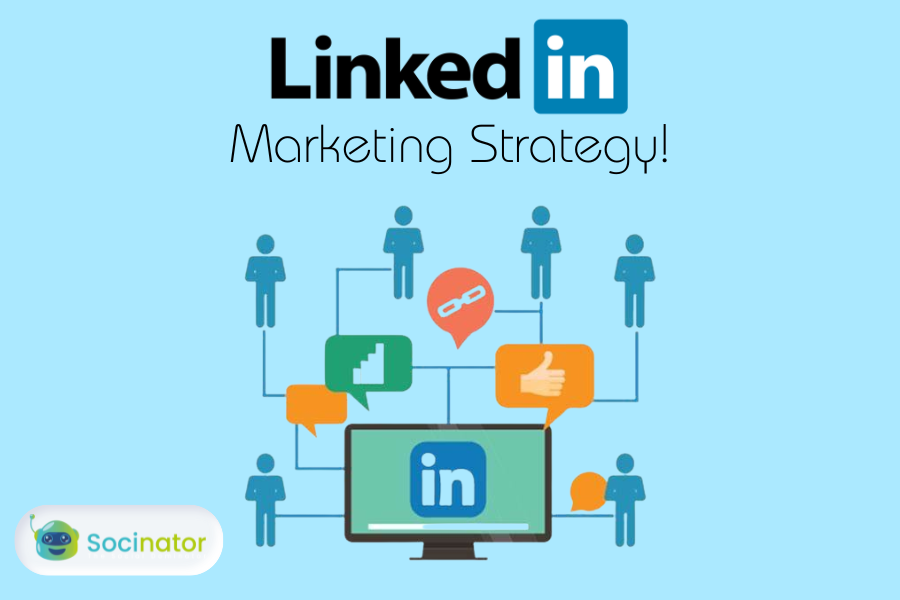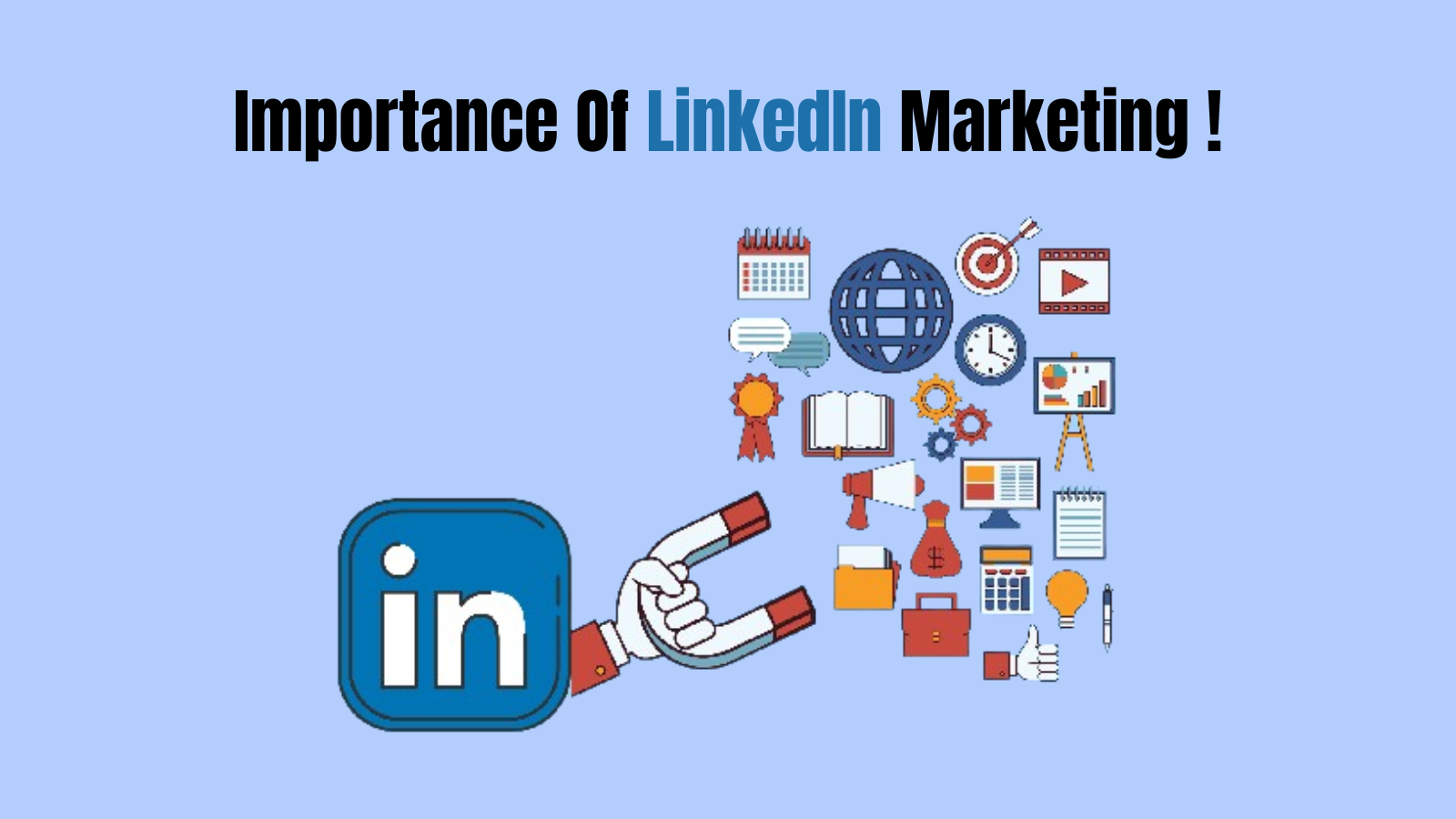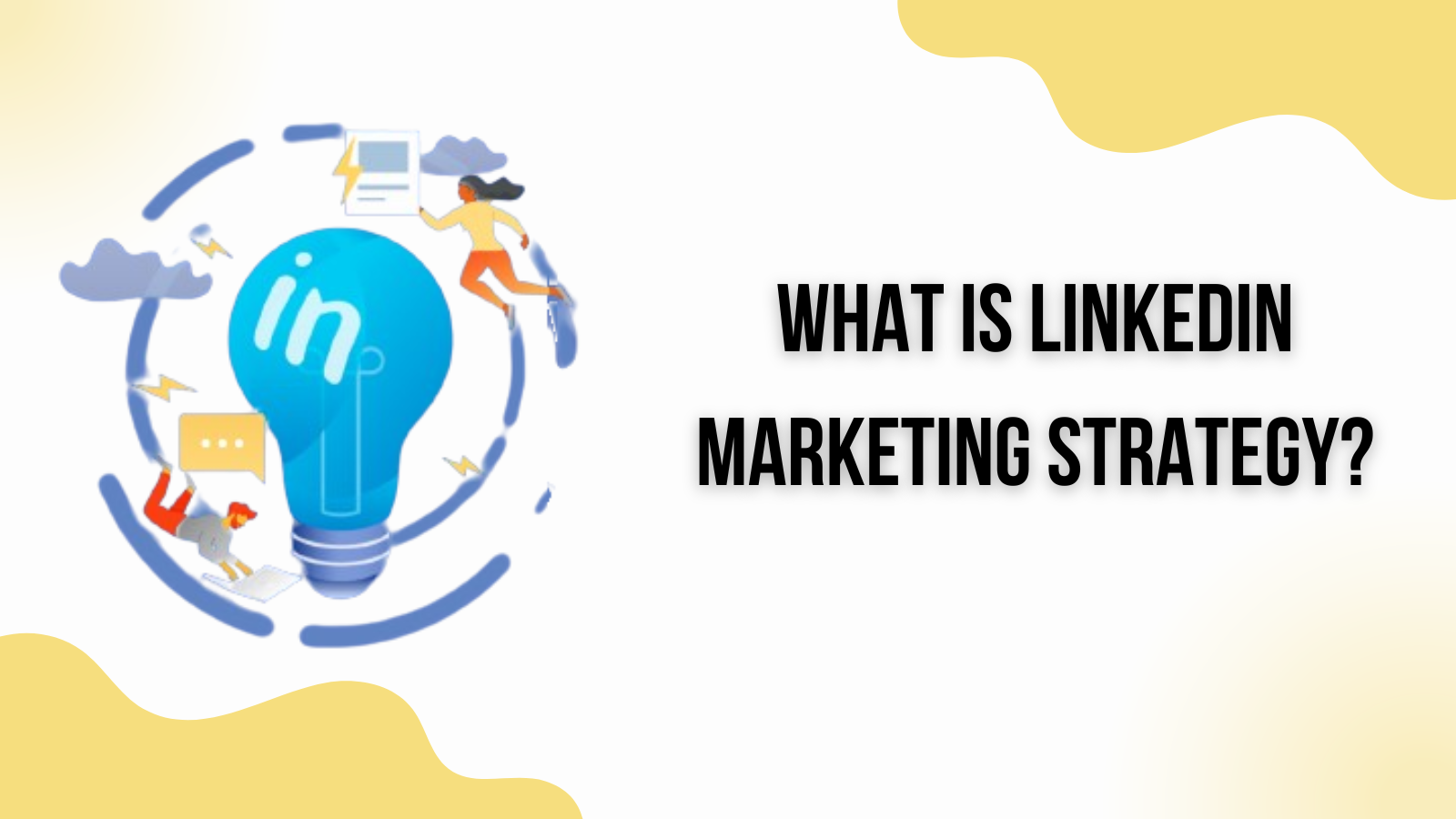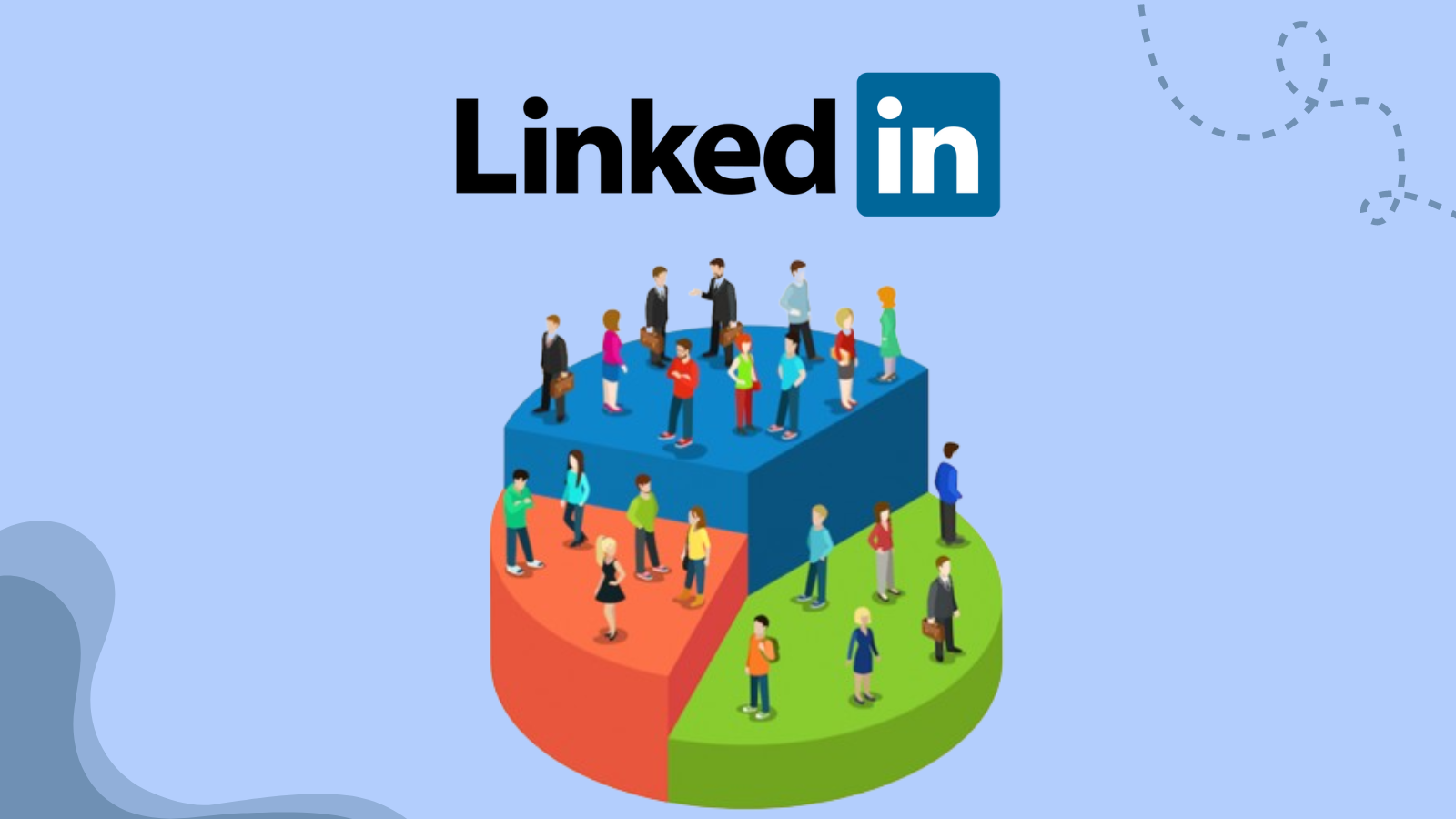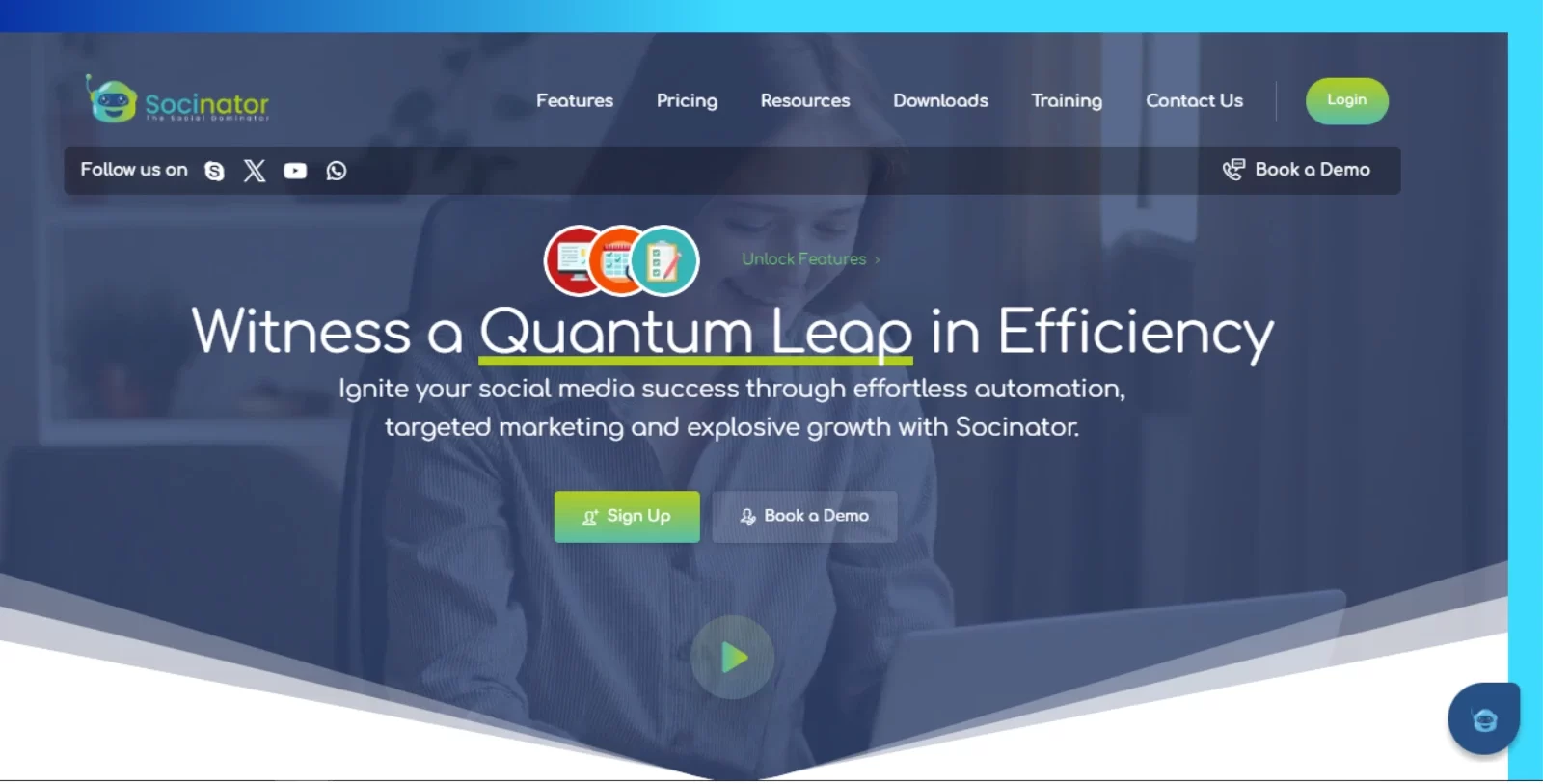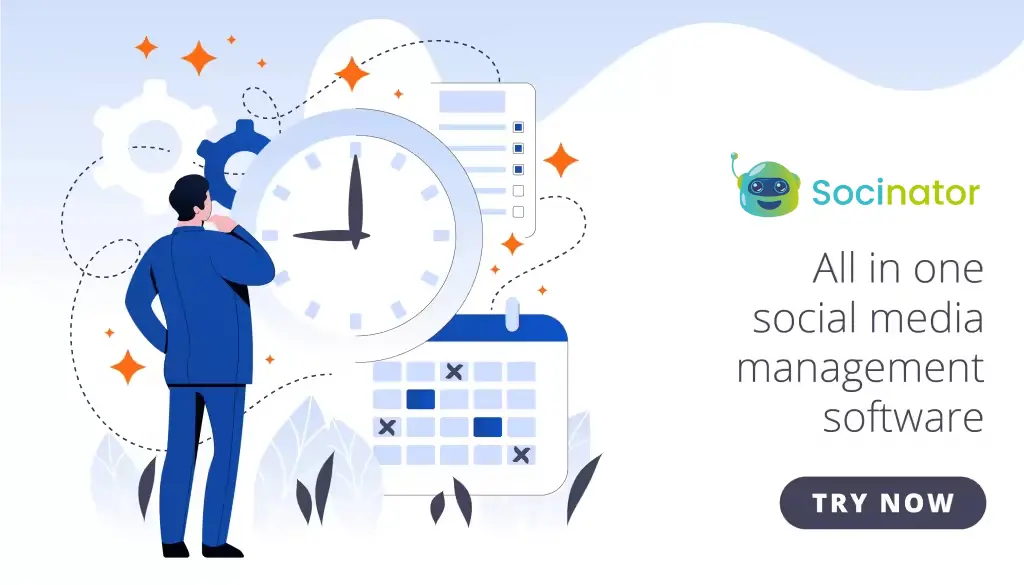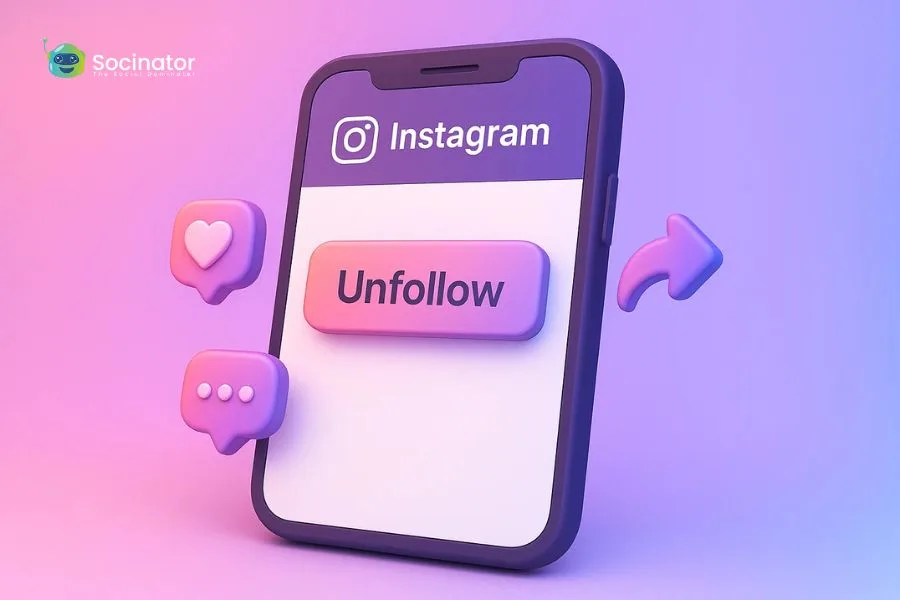LinkedIn has evolved into much more than just a platform for professional networking—it’s become a powerhouse for marketing and lead generation. With over 700 million users worldwide, LinkedIn offers unparalleled opportunities for businesses to connect with professionals, showcase their brand, and drive meaningful engagement.
Efficiently leveraging LinkedIn can be a game-changer for companies of all sizes. Whether you’re a startup looking to establish credibility in your industry or a well-established corporation aiming to expand your reach, implementing strategic marketing tactics on LinkedIn can significantly boost your brand’s visibility.
In this blog post, we’ll explore everything about an effective LinkedIn marketing strategy to help you unlock the full potential of this dynamic platform.
In a hurry? Listen to the blog instead!
Why Is LinkedIn Marketing Important?
LinkedIn marketing is vital for several reasons, particularly for businesses and professionals operating in a B2B environment.
Here are some key reasons why LinkedIn marketing is crucial:
Professional Networking: LinkedIn is a dedicated platform where professionals and businesses from different industries connect and network. It allows you to build and nurture relationships with industry peers, potential clients, partners, and thought leaders.
Targeted Audience: It provides access to a highly targeted audience based on criteria such as industry, job title, company size, and location. It enables businesses to reach decision-makers and stakeholders directly, increasing the likelihood of generating quality leads and conversions.
Brand Visibility and Authority: By consistently sharing valuable content, engaging with your network, and participating in relevant discussions, you can enhance your brand visibility and establish yourself or your company as an authority in your industry. It helps build trust and credibility among your target audience.
Lead Generation: LinkedIn offers various tools and features for lead generation, such as LinkedIn Ads, sponsored content, and lead gen forms. These tools allow businesses to capture prospect information, nurture leads, and drive conversions effectively.
Recruitment and Talent Acquisition: It is a potent platform that enables companies to recruit and acquire top talent. Companies can use LinkedIn to post job openings, search for qualified candidates, and showcase their company culture to attract top talent.
Content Marketing Opportunities: LinkedIn provides opportunities for content marketing, allowing businesses to share blog posts, articles, videos, and other valuable content with their audience. This content can help educate, inform, and engage potential customers, ultimately driving traffic to your website and increasing conversions.
LinkedIn marketing is a unique platform for professionals and businesses to connect, engage, and grow their network. That’s why it’s crucial to have an efficient LinkedIn marketing strategy for marketing.
What Is LinkedIn Marketing Strategy?
LinkedIn marketing strategy involves optimizing your company page, sharing relevant content regularly, and establishing thought leadership in your industry.
Encourage employee advocacy, engage in LinkedIn groups, and utilize LinkedIn ads for targeted reach. Focus on lead generation, networking, and relationship building while continuously analyzing performance for optimization. Integrating LinkedIn efforts with other marketing channels ensures a cohesive strategy for maximum impact.
Here are some strategies that you can apply with your Linkedin marketing:
Optimize Your Company Page:
Boost your company’s online presence and visibility with a professional and visually captivating page. Effectively communicate your brand identity with high-quality images, logos, and banners. Craft a compelling company description incorporating relevant keywords to improve your LinkedIn SEO and attract your target audience. Ensure to include accurate contact information, website links, and other pertinent details to facilitate seamless interaction with potential customers.
Content Strategy:
Create a thorough strategy for regularly providing valuable content to your audience. By sharing a variety of content formats and focusing on addressing the needs of your target audience, you can establish credibility, foster engagement, and expand your brand’s reach. Encourage active participation from your employees to amplify the impact of your content across social networks and beyond.
Engagement and Networking:
Cultivate meaningful connections and foster community engagement by proactively interacting with your audience on LinkedIn. By actively participating in discussions, joining relevant groups, and leveraging LinkedIn’s search features, you can establish your presence as a trusted authority in your industry while expanding your professional network.
LinkedIn Advertising:
Connect and engage with your target audience efficiently using LinkedIn’s robust advertising platform. By leveraging various ad formats and continuously refining your targeting and messaging strategies based on performance data, you can maximize the impact of your advertising efforts and achieve your business objectives with precision and efficiency.
LinkedIn Analytics:
Gain valuable insights into the performance of your LinkedIn presence and marketing efforts by utilizing LinkedIn’s built-in analytics tools. By regularly monitoring key metrics and analyzing data trends, you can identify what content resonates most with your audience. Doing so you can understand the impact of your advertising campaigns, and make informed decisions to optimize your LinkedIn strategy for success.
Employee Advocacy:
Empower your workforce to become brand ambassadors by actively participating in your company’s LinkedIn presence. Employees can amplify your brand’s reach and credibility by optimizing their profiles, sharing company content, and engaging with their networks. Implementing an employee advocacy program incentivizes participation and fosters a culture of collaboration and pride in representing the organization.
LinkedIn Live and Events:
Utilize LinkedIn’s live video broadcasting feature and event promotion tools to create dynamic and interactive experiences for your audience. By leveraging LinkedIn Live for engaging content such as webinars or Q&A sessions and actively promoting events through your company page and personal profiles. You can foster deeper connections with your community and establish your organization as a thought leader in your industry.
Consistency and Monitoring:
You can ensure your marketing strategy remains relevant and practical by prioritizing regular activity and staying vigilant to shifts in LinkedIn’s landscape and industry trends. This commitment to consistency and ongoing monitoring strengthens your brand’s presence. It also allows you to adapt swiftly to changes, maintain audience engagement, and drive sustainable growth on the platform.
Businesses can effectively leverage LinkedIn as a powerful marketing tool to achieve their goals and objectives within the professional community. Crafting a successful LinkedIn marketing strategy entail comprehending the platform’s demographics, allowing you to tailor your approach to the appropriate audience.
Also Read:
05 LinkedIn Marketing Tips To Improve Your Strategy
Get The Complete Information About LinkedIn Automation Tools
How To Master LinkedIn Management And Make The Best Of It?
Leveraging Demographics for Effective Marketing Strategies –
Businesses can refine their LinkedIn marketing strategy to effectively target and engage with the right audience, ultimately driving meaningful results. Let’s delve into the demographics of LinkedIn users.
Professional Audience: LinkedIn predominantly attracts professionals, making it an ideal platform for B2B marketing and professional networking. The majority of users are actively seeking career opportunities, industry insights, and professional connections.
Higher Education and Income Levels: LinkedIn users typically have higher levels of education and income compared to other social media platforms. A significant percentage of individuals possess a bachelor’s, master’s, or doctoral degree, making them high-value targets for businesses.
Decision Makers and Influencers: LinkedIn is a hub for decision-makers, executives, and industry influencers. Many users hold leadership positions within their organizations, making them vital targets for B2B marketing campaigns and thought leadership initiatives.
Age Distribution: While LinkedIn’s user base spans across age groups, it tends to skew slightly older compared to other social platforms. Professionals in their late 20s to mid-50s favor the platform, though users of all ages are present.
Industry Preferences: LinkedIn caters to professionals across various industries, with significant representation in sectors such as technology, finance, healthcare, marketing, and consulting. Understanding the industry preferences of your target audience can help tailor your content and messaging for maximum impact.
Mobile Usage: LinkedIn experiences significant mobile usage like other social media platforms, with a growing number of users accessing the platform via smartphones and tablets. Creating a mobile-friendly marketing strategy is vital for effectively reaching LinkedIn users.
Businesses and professionals should understand LinkedIn’s demographics to maximize networking, marketing, recruitment, and personal branding. By tailoring their strategies to align with the characteristics of LinkedIn’s user base, they can maximize their impact. To enhance your LinkedIn marketing strategy, consider incorporating automation tools like Socinator.
Elevate Your LinkedIn Marketing Strategy With Socinator!
Socinator is a social media automation tool designed to help individuals and businesses manage and grow their presence on various social media platforms.
It offers a range of features to streamline tasks such as scheduling posts, automating interactions, managing multiple accounts, and analyzing performance metrics.
With Socinator, users can streamline their social media marketing efforts by automating repetitive tasks across various platforms such as Facebook, Instagram, Twitter, LinkedIn, Pinterest, YouTube, and Quora.
Here’s how you can leverage it for your LinkedIn marketing strategy:
Profile Management:
Using this feature, you can efficiently handle several LinkedIn profiles simultaneously through a single dashboard. You can schedule posts, update profile information, and monitor activity across all your LinkedIn accounts efficiently.
Content Scheduling:
Plan and schedule your LinkedIn posts in advance with its scheduling feature. It enables you to maintain a consistent posting schedule, share valuable content, and engage with your audience at optimal times.
Automated Engagement:
It has Linkedin automation features for liking, commenting, and sharing content on LinkedIn. You can set specific criteria to target posts based on keywords, hashtags, or user profiles. It allows you to engage with relevant content and expand your network automatically.
Connection Management:
Grow your LinkedIn network strategically by automating connection requests and accepting incoming requests based on predefined criteria. Socinator’s connection management tools help you build a relevant and engaged network of professionals in your industry.
Lead Generation:
Use its automation capabilities to generate leads on LinkedIn. You can automate messaging to prospects, send personalized connection requests, and follow up with leads to nurture them through the sales funnel.
Group Interaction:
Participate in LinkedIn groups effectively by automating interactions such as posting content, commenting on discussions, and sending messages to group members. Socinator assists you in staying active and engaged within relevant groups, eliminating the need for spending hours managing your participation manually.
Analytics and Reporting:
Measure the performance of your LinkedIn marketing campaigns with Socinator’s analytics and reporting features. Track key metrics such as engagement rate, connection growth, and post-performance to evaluate the effectiveness of your strategy and make data-driven decisions.
Compliance and Safety:
Ensure compliance with LinkedIn’s terms of service and maintain account safety with its built-in safety features. The platform follows best practices to prevent account suspension or restrictions while automating your LinkedIn marketing activities.
You can streamline your efforts, save time, and achieve better results using Socinator. LinkedIn provides tools and automation to help with marketing, lead generation, and networking.
Conclusion –
A strong LinkedIn marketing strategy is essential for businesses and professionals to leverage the platform’s networking, lead generation, and brand-building potential. Businesses can maximize their impact on LinkedIn by optimizing company pages, creating valuable content, engaging with the audience using LinkedIn advertising, analyzing performance, and empowering employee advocacy.
Understanding LinkedIn demographics and utilizing tools like Socinator can further enhance marketing efforts. With strategic planning and consistent execution, LinkedIn has become a powerful platform for growth and success in the professional world.

